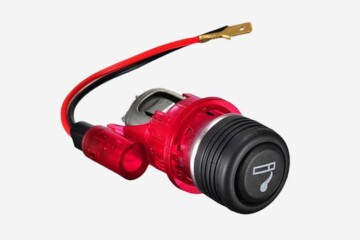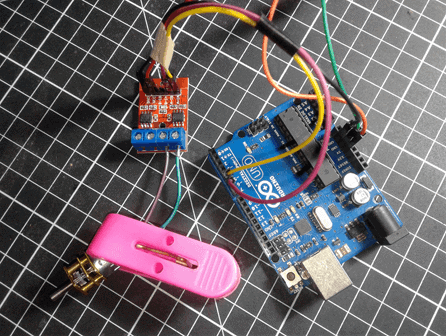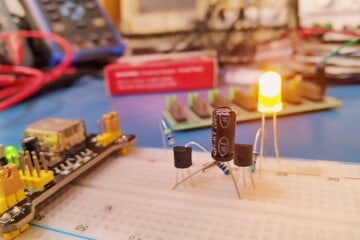The decade resistance box is an indispensable test gear for any electronics lab as it can be used to substitute different values of resistors during prototyping and/or experimenting with electronic circuits. Using it is easy as the demanded resistance values can be set by just turning some knobs, and it can be operated in-circuit without any external power source.
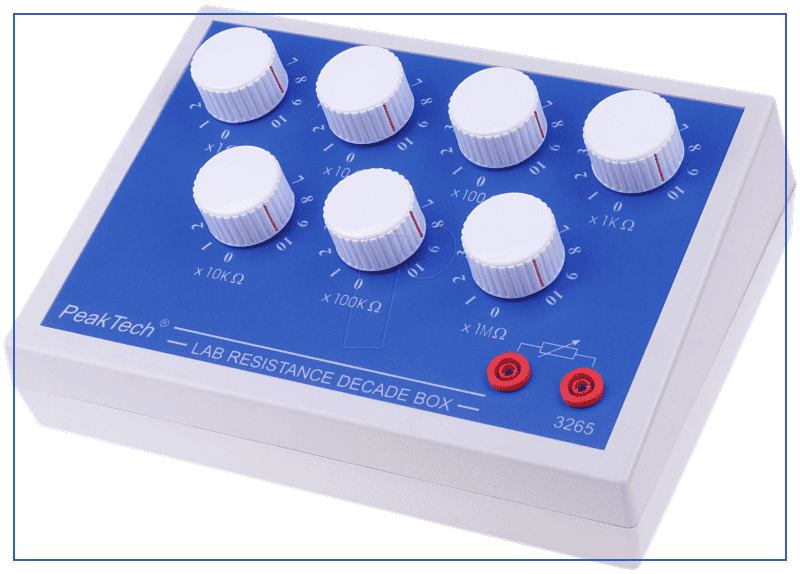
So, a decade resistance box is a simple device that contains resistors of many values that can be accessed via mechanical switches. All you need to do is just adjust the knobs to output any of the discrete resistances offered by the device.
Below you can see a copy of the official schematic of the SparkFun Decade Resistance Box kit that allows you to dial in a specific resistance value quickly and accurately between 0Ω and 999,990Ω, in 10Ω increments.
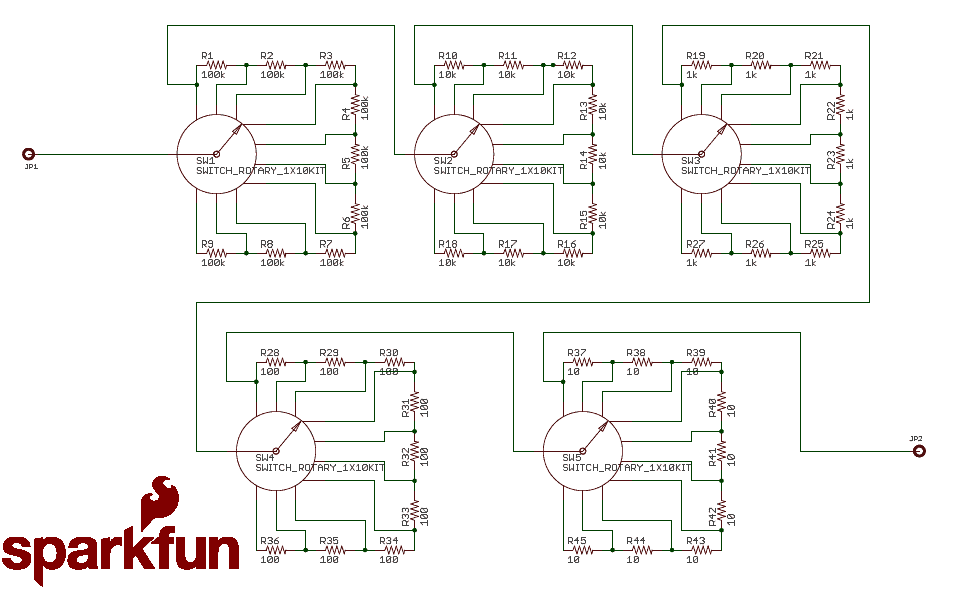
And, this is the SparkFun Decade Resistance Box Kit:
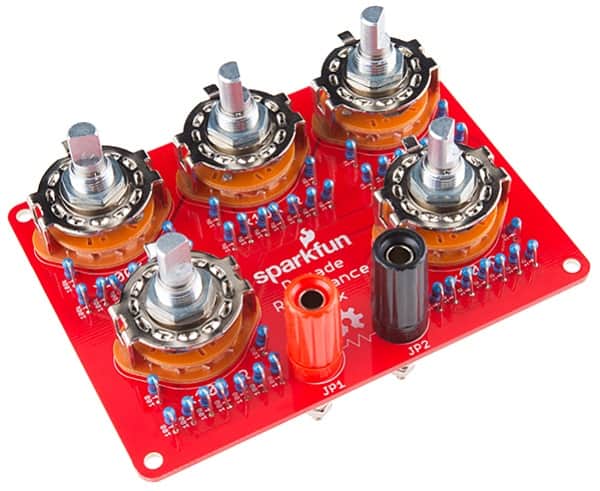
Traditional decade resistance boxes (and do it yourself kits) are relatively too expensive to be afforded but recently I came across a novel solution in the form of a Seven Decade Programmable Resistor Board (see below).
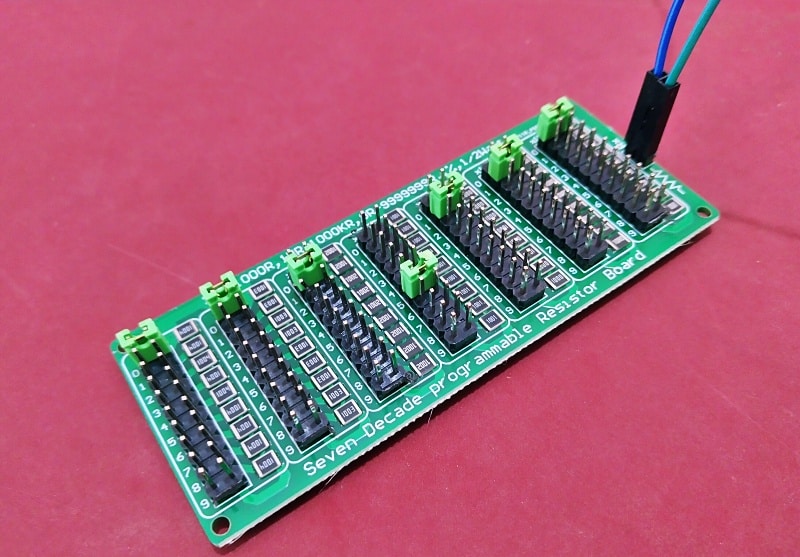
This board contains seven of the described resistor decades in the ranges:
- 1Ω to 9Ω
- 10Ω to 90Ω
- 100Ω to 900Ω
- 1KΩ to 9KΩ
- 10KΩ to 90KΩ
- 100KΩ to 900KΩ
- 1MΩ to 9MΩ
So, the user can set the resistance of the board between 0Ω (all jumpers in the upper position) to 9.999999MΩ (all jumpers in the lower position).
Using the board is very easy. According to the documentation, simply connect the decade resistor into the circuit and dial up the resistance by setting the jumpers to the appropriate values. The value of the resistance is set by selecting each decade multiplier value 0-9 and multiplying it by the decade resistance value and then adding each of the seven resultant values together to give you the total resistance. Here is an example of setting the resistance value to 16,110Ω or 16.11KΩ (10KΩx1 + 1KΩx6 + 100Ωx1 + 10Ωx1):
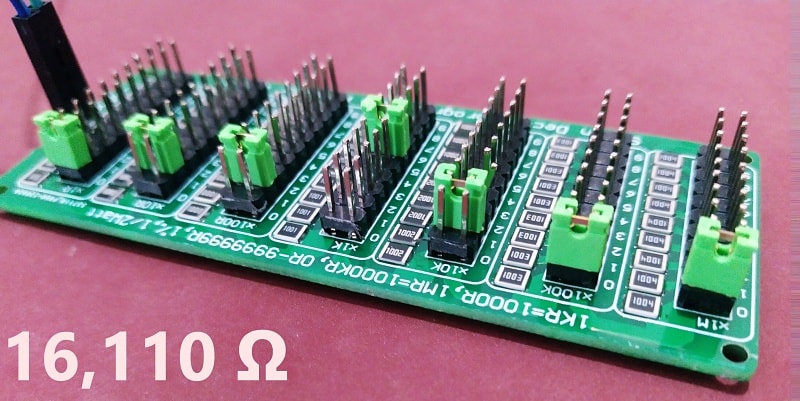
According to the sellers, this resistance decade board meets the following specifications:
- Resistor type: Metal Film SMD
- Resistor tolerance: ±1 %
- Resistor power: 0.5 W
- Maximum voltage between terminals: 200 VDC
- Resistance range: 0Ω to 9.999999MΩ
- Dimensions PCB: 90 mm x 35 mm
As it seems, the seven-decade programmable resistor board introduced here is a mere replica of the original design idea published here https://gerrysweeney.com/seven-decade-programmable-resistor-a-low-cost-solution/ but technically there are no substantial differences between them.
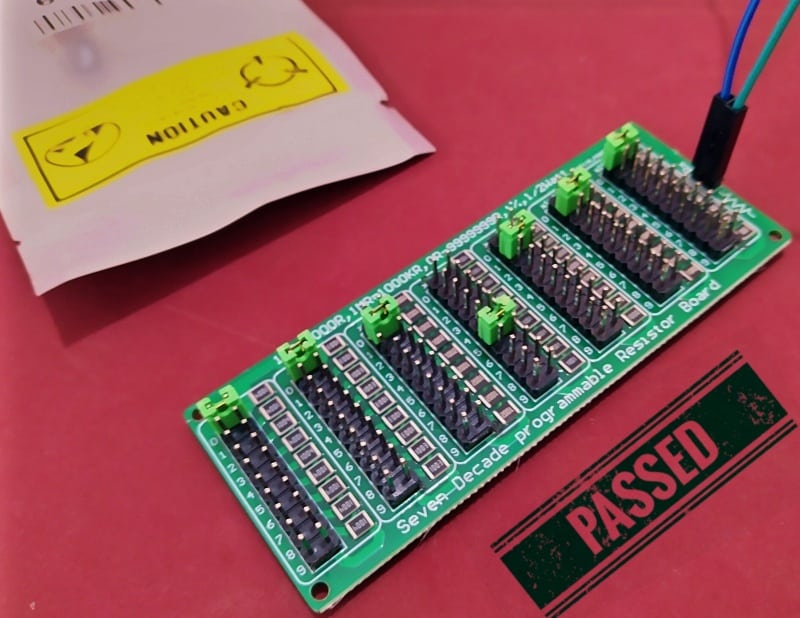
Note that if all jumpers are in the upper position, all resistors are switched off, so the resistance must be 0Ω. It was measured with my Owon XDM2041 digital benchtop multimeter (see the instrument below) according to the four-wire (4W) resistance method by connecting its gold-plated Kelvin probes to the connector of my programmable resistor board. And, it has a residue resistance close to 190mΩ.
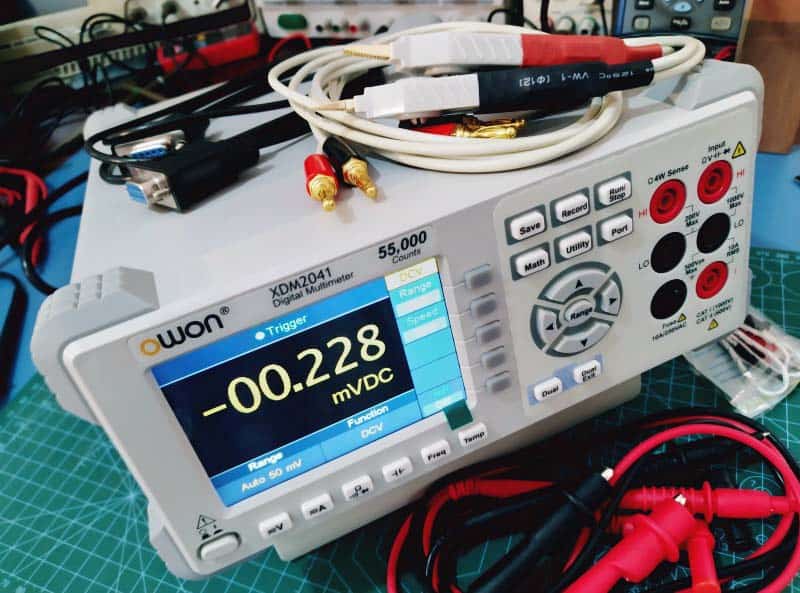
Just a quick note…according to the specification, the decades are composed of 0.5W resistors with a tolerance of ±1%. But it seems the resistors soldered on my board are just 0.25W resistors. It does not matter if you know what you are doing!
So surely this seven-decade programmable resistor board beats the hell out of those crazy expensive decade resistance boxes in terms of price and portability. If you already have one, let me know how it works for you. Ready to jump in?

